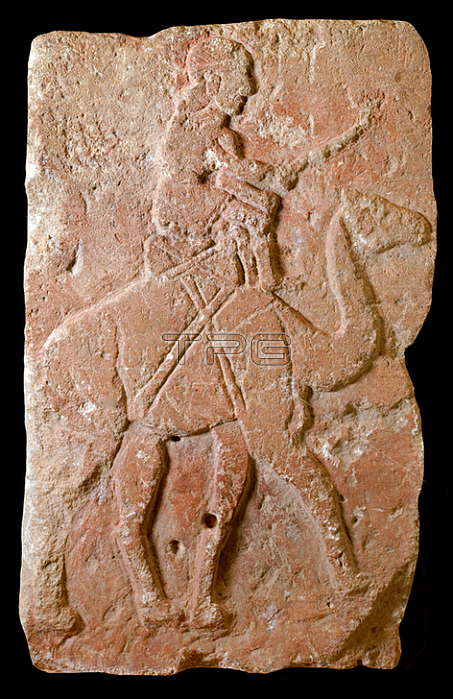
This bas-relief was excavated in northern Syria at the site of Tell Halaf; the capital of a small independent city-state known as Guzana; which was conquered by the Assyrians in the late 9th century BC.
More than two hundred such stone reliefs (styled orthostats) decorated the fa鏰de of a temple-palace built in the 10th century BCE by a local ruler named Kapara. He reused the blocks from one or more pre-existing structures and carved an inscription in cuneiform on each one statings; 'Palace of Kapara; son of Hadianu'. The blocks were placed so that limestone ones painted red alternated with others of black basalt.
In this image; a rider sits atop the hump of a dromedary camel; driving it on with a staff. Crossed leather or cloth bands fasten the saddle to the animal. The image represents an Arab caravan trader. The domestication of dromedaries shortly before the beginning of the first millenium BCE made the caravan trade possible. This relief from Tell Halaf may be the earliest representation of such a dromedary rider.
| px | px | dpi | = | cm | x | cm | = | MB |
Details
Creative#:
TOP20184345
Source:
達志影像
Authorization Type:
RM
Release Information:
須由TPG 完整授權
Model Release:
No
Property Release:
No
Right to Privacy:
No
Same folder images:

 Loading
Loading